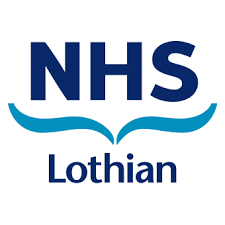- Has the diagnosis been confirmed? If not, consider stopping antibiotics.
- Is there any positive microbiology to identify the bacteria causing the infection?
- Is the patient improving?
Gentamicin - how to use it well!

Gentamicin is an aminoglycoside antibiotic used extensively within the NHS Lothian empirical antibiotic guidelines.
Why use Gentamicin?
Gentamicin works by interrupting protein synthesis, and is highly bactericidal. It has a high resistance barrier, and local resistance to gentamicin is low.
Its spectrum of action includes:
- Gram-negative organisms (E.coli, Klebsiella, etc.)
- Pseudomonas spp.
- Staphylococcus aureus
What are the issues with Gentamicin?
IV Gentamicin has toxicities that you need to be aware of including:
- Nephrotoxicity: usually reversible
- Ototoxicity: usually irreversible; can produce deafness or vestibular toxicity (dizziness, vertigo, oscillopsia).
To try and reduce the risk from gentamicin, we encourage review of gentamicin prescriptions at 72h, and discontinuation at 5 days.
How to prescribe gentamicin
There are 2 ways to prescribe gentamicin for adults used in NHS Lothian:
- Standard dosing - almost all patients
- Synergistic dosing - mostly endocarditis patients
Instructional charts (which also perform the Cockcroft-Gault calculations for you) are available here. Use these whenever possible. If these are unavailable, instructions for manual calculation are available here.
Monitoring
- In standard dosing, you're only monitoring the trough level. This is to ensure the patient is excreting the gentamicin between doses, to reduce the risk of toxicity.
- We do not require the measurement of peak levels unless using synergistic-dosing regimens.
- Review patient
- Have the symptoms changed?
- Do you need to consider repeating investigations or radiological investigations?
- Ask for advice!
- If continuing gentamicin:
- Document antibiotic plan using TRAK short code \antibreview.
- Review daily the need for ongoing IV antibiotic therapy.
- Consider IV to oral switch when improving, see more information here.
- Definitive treatment may be guided by culture results.
Oral route available, culture results available
- Switch to an oral antibiotic that is recommended on the microbiology report. We recommend using antibiotics that are narrow spectrum where possible. Narrow spectrum antibiotics are also referred to as Access antibiotics. Where possible avoid 4C antibiotics.
e.g. Patient being treated for a UTI, urine culture grew E.coli sensitive to amoxicillin --> IV to oral switch to amoxicillin
Oral route available, culture results unavailable
- Switch to an oral antibiotic as recommend for IV to oral switch in the antimicrobial companion
e.g. patient being treated for intra-abdominal infection, improving on IV amoxicillin, IV gentamicin and oral metronidazole --> IV to oral switch to co-trimoxazole + metronidazole
Oral route unavailable
At 72h ask if there is:
- New AKI (Creatinine 1.5x baseline)
- Ototoxicity
- Culture result showing gentamicin-resistance
If no to all 3, continue gentamicin to 5 days (if yes to any, ask for advice)
At 5 days:
- Is the oral route still unavailable?
- Are there culture results/antibiotic sensitivities that could help you choose a gentamicin alternative?
If you can IVOS then do so, either empirically or as directed by culture results.
If you cannot IVOS, then ask for advice about gentamicin alternatives.
